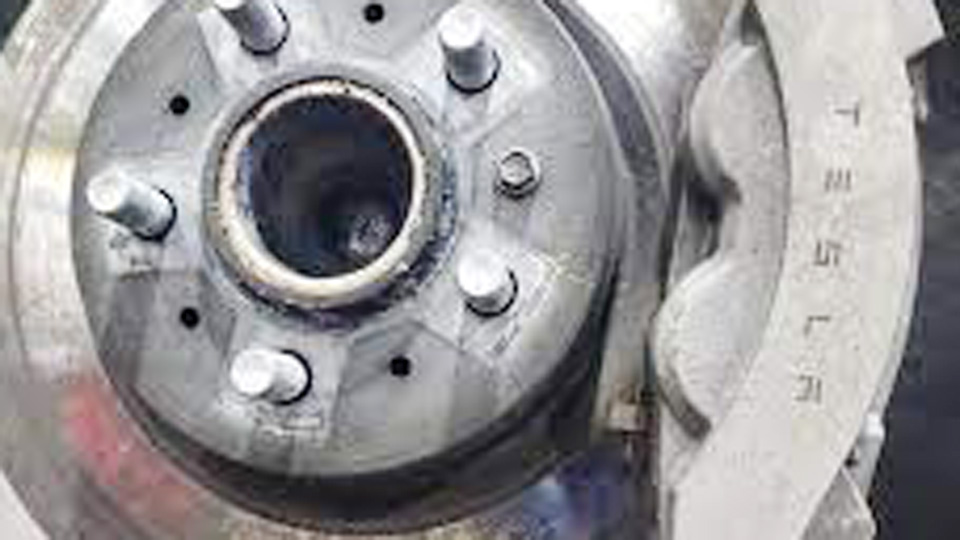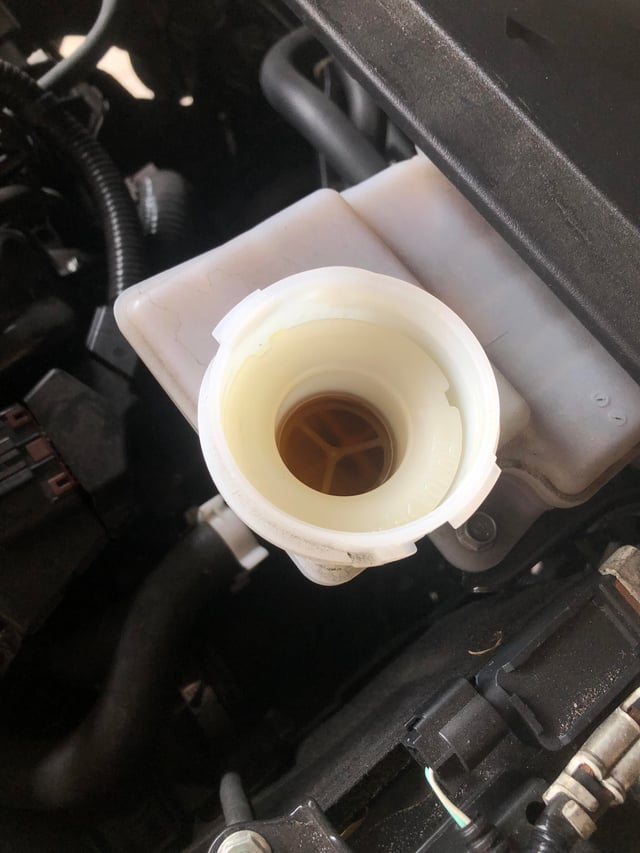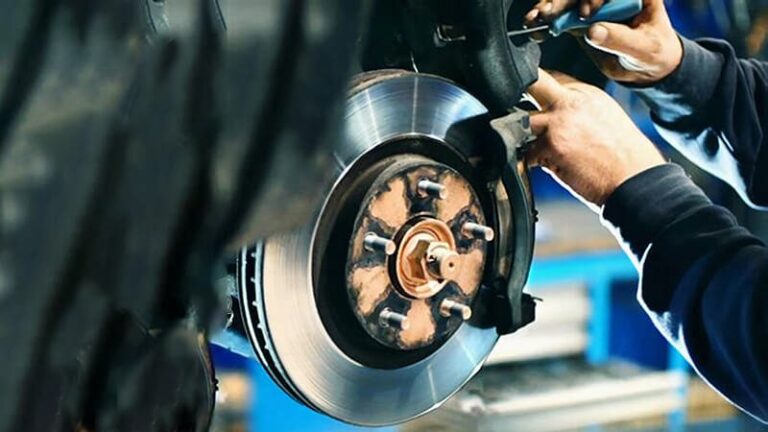I’ve spent countless hours tinkering with cars in my garage, from swapping out brake pads on my old pickup to marveling at the tech in my buddy’s Tesla. One question that keeps popping up, especially among new electric vehicle (EV) owners, is: how do brakes work on an electric car? It’s a great question, because while EVs share some similarities with gas-powered cars, their braking systems are a different beast altogether.
Whether you’re a DIY mechanic, a car enthusiast, or just someone curious about your EV’s inner workings, understanding how these brakes function can save you money, boost your confidence, and make you a smarter driver.
I’ll walk you through the nuts and bolts of EV braking systems, focusing on regenerative braking, traditional friction brakes, and how they work together to keep you safe on U.S. roads. We’ll also cover maintenance tips, common issues, and practical advice for keeping your EV’s brakes in top shape, no matter if you’re cruising through snowy Michigan winters or tackling California’s hilly highways.

Image by reddit
What Makes Electric Car Brakes Unique?
Electric cars don’t rely solely on traditional friction brakes like your gas-powered sedan. Instead, they use a combination of regenerative braking and conventional brakes to slow down or stop. This hybrid approach is what sets EVs apart and makes them so efficient. When I first drove an EV, I was blown away by how seamlessly these systems blend together.
Regenerative Braking Explained
Regenerative braking is the star of the show in electric cars. Picture this: you’re driving down a hill, and instead of wasting energy by pressing the brake pedal, your car captures that energy and sends it back to the battery. It’s like recycling kinetic energy into electricity, which extends your driving range.
Here’s how it works: when you lift your foot off the accelerator or lightly press the brake pedal, the electric motor reverses its function. Instead of using battery power to spin the wheels, the wheels spin the motor, turning it into a generator. This generates electricity that flows back into the battery while slowing the car down. It’s a genius system, and in stop-and-go traffic—like during a rush-hour commute in Atlanta—it can add significant range to your EV.
Why It Matters
This energy-saving feature reduces wear on your brake pads and rotors, which means less frequent maintenance. In my friend’s Tesla Model 3, he’s gone over 100,000 miles without replacing the brake pads, something unheard of in most gas-powered cars. However, regenerative braking isn’t perfect for every situation, especially at high speeds or during emergency stops, which is where traditional brakes come in.
When to Use It
Regenerative braking shines in city driving or downhill situations. Many EVs let you adjust the regen strength—low, medium, or high—through settings or paddle shifters. For example, on a twisty mountain road in Colorado, I’d crank up the regen to capture more energy while keeping control without overusing the brake pedal. But on a freeway, I’d dial it back to coast smoothly and avoid unnecessary slowdowns.
Traditional Friction Brakes in EVs
Even with regenerative braking, EVs still rely on traditional friction brakes for heavy-duty stopping. These are the same disc or drum brakes you’d find in a gas car, where pressing the pedal forces brake pads against rotors to create friction and slow the wheels.
How They Work Together
In an EV, the car’s computer decides how to blend regenerative and friction braking. When you tap the brake lightly, regenerative braking takes the lead. If you slam the pedal for a sudden stop—like avoiding a deer on a rural Wisconsin road—the friction brakes kick in to provide maximum stopping power. This seamless integration feels natural, but it can take some getting used to, especially if you’re transitioning from a gas car.
Why They’re Still Important
Regenerative braking is great, but it has limits. It’s less effective at high speeds or when the battery is fully charged, as there’s nowhere to store the recaptured energy. Friction brakes are your fail-safe, ensuring you can stop quickly and safely in any situation. I’ve seen this in action when a friend had to brake hard to avoid a sudden lane change on I-95; the friction brakes took over when regen alone wasn’t enough.
Maintenance Considerations
Because EVs rely heavily on regenerative braking, the friction brakes get less wear. That’s a win for your wallet, but there’s a catch. Underused brakes can develop rust, especially in humid places like Florida or salty winter roads in New York. Rust can build up on the rotors and pads, reducing their effectiveness when you need them most. Regular inspections are key to catching this early.
Electrohydraulic and Brake-by-Wire Systems
Some EVs, particularly hybrids and high-end models, use electrohydraulic or brake-by-wire systems. These combine electric motors with hydraulic components for smoother, more precise braking. I worked on a hybrid Toyota Prius that used an electrohydraulic setup, and the brake pedal felt incredibly responsive compared to older systems.
How They Work
Electrohydraulic brakes use an electric motor to control the hydraulic pressure applied to the brake pads, offering a more consistent feel. Brake-by-wire systems take it further by replacing the mechanical link between the pedal and brakes with electronic signals. The pedal sends a command to the car’s computer, which calculates the ideal braking force.
Why It Matters
These systems are more complex but provide better control, especially in EVs with advanced features like anti-lock braking (ABS) or stability control. They’re also safer in some cases, as they can compensate for sensor failures. However, they require specialized maintenance, so don’t try to DIY these repairs unless you’re a pro with the right tools.
When to Service Them
If you notice a spongy brake pedal or unusual noises, it’s time to check the system. In my experience, these issues often stem from low brake fluid or sensor glitches, which a qualified mechanic can diagnose quickly. Regular servicing, especially in harsh climates, keeps these advanced systems running smoothly.
Maintenance Tips for EV Brakes
Maintaining EV brakes is different from gas cars, but it’s not rocket science. Here are some practical tips based on my years of wrenching and driving:
Inspect Regularly
Check your brake pads and rotors every 10,000–15,000 miles, especially if you live in a wet or salty area. Look for rust, uneven wear, or debris buildup. I once found a pebble lodged in a caliper that was causing a faint grinding noise—easy fix, but it could’ve been trouble if ignored.
Balance Regen and Friction Braking
Over-relying on regenerative braking can lead to rusty friction brakes. Occasionally use the brake pedal in low-stakes situations, like slowing down for a stop sign, to keep the system active. This is especially important in cold, wet states like Oregon or Maine.
Check Brake Fluid
Brake fluid absorbs moisture over time, which can corrode the system. Most EVs use DOT 3 or DOT 4 fluid—check your owner’s manual. I recommend flushing the fluid every two years or as recommended by the manufacturer. I learned this the hard way when an old hybrid started feeling mushy due to contaminated fluid.
Use EV-Specific Brake Pads
Some brands, like Wagner, make galvanized brake pads designed for EVs to resist corrosion. They’re pricier but worth it for longevity. I swapped standard pads for galvanized ones on a Nissan Leaf, and they’ve held up beautifully for over 80,000 miles.
Listen for Warning Signs
Squealing, grinding, or vibrations when braking are red flags. Don’t ignore them. A friend’s Chevy Bolt had a warped rotor that caused shaky braking—caught it early, and a quick resurfacing saved the day.
Maintenance Schedule Table
| Component | Inspection Interval | Action |
|---|---|---|
| Brake Pads | Every 10,000–15,000 miles | Check for wear, rust, or damage |
| Rotors | Every 10,000–15,000 miles | Inspect for warping or corrosion |
| Brake Fluid | Every 2 years | Flush and replace per manufacturer specs |
| Calipers | Annually | Ensure smooth operation, check for leaks |
Common Issues and How to Fix Them
EV brakes are reliable, but they’re not immune to problems. Here are the most common issues I’ve encountered and how to handle them:
Rusty Brake Components
Rust is a bigger issue in EVs because the friction brakes are used less. In coastal areas like Miami, I’ve seen rotors develop surface rust after just a week of light driving. To fix it, gently apply the brakes a few times to scrape off the rust. For stubborn cases, a mechanic can resurface or replace the rotors.
Noisy Brakes
Squeaking or grinding can happen if debris gets stuck or if the pads are glazed from underuse. Clean the brakes with a wire brush and brake cleaner, or replace the pads if they’re worn. Ceramic pads are quieter and more durable for EVs.
Reduced Braking Power
If your brakes feel weak, it could be due to low brake fluid, air in the lines, or a failing sensor in a brake-by-wire system. Bleed the brake lines or top off the fluid, and have a professional check the electronics if the issue persists.
Uneven Regen Performance
Regenerative braking can feel inconsistent in extreme cold or when the battery is full. In Minnesota winters, I’ve noticed regen weakening because the battery can’t accept as much energy. Adjust your driving style to rely more on friction brakes in these conditions, and keep the battery charge below 90% when possible.
Pros and Cons of EV Braking Systems
Pros
- Energy Efficiency: Regenerative braking can recover up to 70% of kinetic energy, boosting range in stop-and-go traffic.
- Longer Brake Life: Brake pads can last over 100,000 miles due to reduced wear.
- Smooth Driving: One-pedal driving in EVs like Tesla makes city commutes effortless.
- Environmental Benefits: Less brake dust means cleaner air, especially in urban areas like Los Angeles.
Cons
- Learning Curve: The brake pedal feel can be different, which might throw off new EV drivers.
- Rust Issues: Infrequent use of friction brakes can lead to corrosion in humid or salty conditions.
- Complex Repairs: Electrohydraulic and brake-by-wire systems require specialized tools and expertise.
- Limited Regen at High Speeds: You’ll still need friction brakes for fast stops or emergencies.
Step-by-Step Guide to Inspecting Your EV Brakes
If you’re a DIYer like me, you can do a basic brake inspection at home. Here’s how I check my EV’s brakes:
- Gather Tools: You’ll need a jack, jack stands, a lug wrench, a flashlight, and a wire brush.
- Lift the Car: Safely jack up one corner of the vehicle and secure it with jack stands.
- Remove the Wheel: Use the lug wrench to take off the tire and expose the brake assembly.
- Inspect the Pads: Check the thickness of the brake pads. If they’re less than ¼ inch, replace them.
- Check the Rotors: Look for rust, grooves, or warping. Smooth rotors should feel flat and shiny.
- Clean Debris: Use a wire brush to remove light rust or dirt from the rotors and calipers.
- Test the Calipers: Ensure they move freely without sticking.
- Reassemble and Repeat: Put the wheel back on, lower the car, and check the other wheels.
Warning: If you’re not confident, take your EV to a mechanic. Brake safety is non-negotiable.
Driving Tips for Maximizing EV Brake Performance
Here are some real-world tips I’ve picked up for getting the most out of your EV’s brakes:
- Adjust Regen Settings: Experiment with regenerative braking levels. High regen is great for city driving, while low regen suits highways.
- Practice One-Pedal Driving: In EVs like the Nissan Leaf or Tesla, ease off the accelerator to slow down without touching the brake pedal. It’s a game-changer in traffic.
- Avoid Overbraking: Don’t slam the brakes unless necessary. Gradual slowing maximizes regen efficiency.
- Plan for Cold Weather: In places like Chicago, warm up the battery before driving to improve regen performance.
- Use Quality Parts: Invest in EV-specific brake pads and rotors to combat rust and extend lifespan.
How EV Brakes Perform in U.S. Driving Conditions
The U.S. is a diverse country, and your EV’s brakes will face different challenges depending on where you drive:
- Urban Areas: Stop-and-go traffic in cities like New York or Dallas is perfect for regenerative braking, which can add 10–30% more range.
- Highways: On long stretches like I-80, use low regen to coast efficiently and save the friction brakes for emergencies.
- Mountains: Downhill roads in the Rockies demand high regen to capture energy, but be ready to use friction brakes for sharp turns.
- Cold Climates: In states like Minnesota, regen may be limited in freezing temperatures, so check your brakes frequently for ice or rust.
- Wet Climates: Humidity in places like Louisiana can cause corrosion, so inspect and clean your brakes regularly.
Conclusion
Understanding how brakes work on an electric car isn’t just for gearheads—it’s practical knowledge that can save you money, improve your driving experience, and keep you safe. Regenerative braking is a game-changer, turning wasted energy into extra miles, while traditional friction brakes provide reliable stopping power when you need it most. By balancing these systems, maintaining your brakes, and adapting to your local driving conditions, you can get the most out of your EV.
Next time you’re cruising in your electric car, pay attention to how the brakes feel. Try tweaking the regen settings or doing a quick inspection in your driveway. You’ll be amazed at how much control you have over your vehicle’s performance. Pro tip: keep a can of brake cleaner and a wire brush in your garage for quick touch-ups—it’s a small investment for peace of mind.
FAQ
How long do brake pads last on an electric car?
Thanks to regenerative braking, EV brake pads can last over 100,000 miles, compared to 40,000–60,000 miles in gas cars. However, this depends on your driving habits and local conditions like humidity or salt exposure.
Can I use regular brake pads on my EV?
You can, but EV-specific pads, like galvanized ones, are better at resisting rust from underuse. I’ve seen standard pads corrode faster in EVs, so it’s worth spending a bit more for durability.
Why does my EV’s brake pedal feel different?
The pedal might feel less responsive due to the blend of regenerative and friction braking. Newer models have improved this, but practice one-pedal driving to get used to the feel.
How do I know if my EV brakes need maintenance?
Listen for squealing, grinding, or vibrations, and check for reduced braking power. Inspect the pads and rotors every 10,000–15,000 miles, especially in wet or salty areas.
Is regenerative braking safe for emergency stops?
Regenerative braking is great for gradual slowing but not ideal for sudden stops. Your EV’s friction brakes take over in emergencies, ensuring you stop quickly and safely.



